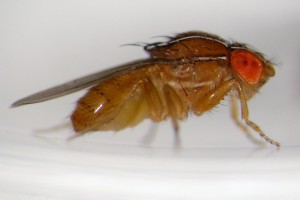
Photo courtesy of University of Wisconsin-Madison.
When it comes to iconic football imagery, few scenes can top the frozen tundra of Lambeau Field. In addition to a storied football tradition, Wisconsin also is responsible for one of the most widely recognizable and historically important pest management products — warfarin. The active ingredient was originally developed as a therapeutic anticoagulant drug for humans and still is used widely. But it was also an important first-generation anticoagulant rodenticide used throughout the world.
The name warfarin is derived from the research fund that originally financed its development, the Wisconsin Alumni Research Fund (WARF). This entity continues to fund important projects, including research about traumatic brain injuries, a popular topic in the world of professional football. In fact, the National Football League recently settled a lawsuit with former players about the long-term effects of traumatic brain injuries suffered on the gridiron.
Traumatic brain injuries occur when the body is forcefully jostled and the brain is caused to strike the inside of the skull. Millions of traumatic brain injuries occur in the United States each year, mostly because of car crashes, accidents in the workplace and sports-related injuries such as football collisions. Traumatic brain injuries are also a growing concern with veterans returning from combat. Symptoms range from mild to severe, with the worst cases resulting in neurodegenerative effects and death.
Researchers at the University of Wisconsin, funded by WARF, recently published a paper detailing a model for replicating traumatic brain injuries in fruit flies (Drosophila melanogaster). A sharp strike to a vial of fruit flies leaves them stunned, the result of their tiny brains impacting the inside of the head capsule. This replicates the injury to human brains when they strike the interior of the skull cavity. Researchers hope to learn more about the effects of brain injuries in fruit flies regarding age and genetic differences, with the goal of translating the results into conclusions that will help human patients.
Although many pest management professionals (PMPs) consider fruit flies to be merely a pest organism, scientists have used the species for years to unlock genetic mysteries and develop techniques that impact modern medicine. Using fruit flies as a model for examining the effects of traumatic brain injuries in humans will help physicians treat accident victims, as well as preserve the health and well being of the athletes battling on the frozen tundra in Green Bay. PMP
Reference
Katzenberger, R.J., C.A. Loewen, D.R. Wassarman, A.J. Petersen, B. Ganetzky, and D.A. Wassarman. “A Drosophila model of closed head traumatic brain injury.” Proceedings of the National Academy of Sciences. Published online ahead of print: www.pnas.org/content/early/2013/10/08/1316895110.abstract
You can reach Dr. Fredericks, technical director for the National Pest Management Association (NPMA), at jfredericks@pestworld.org
Leave A Comment